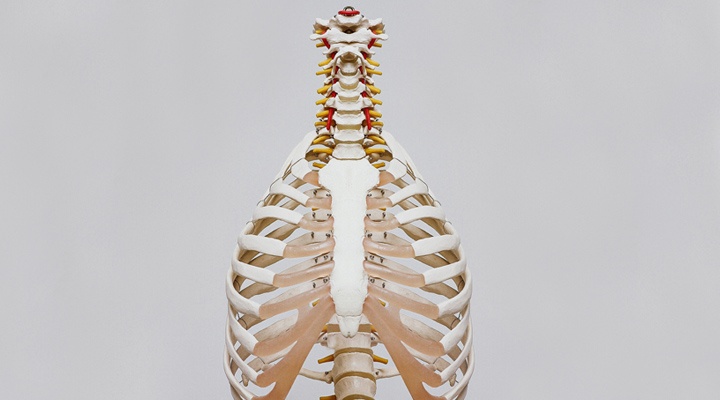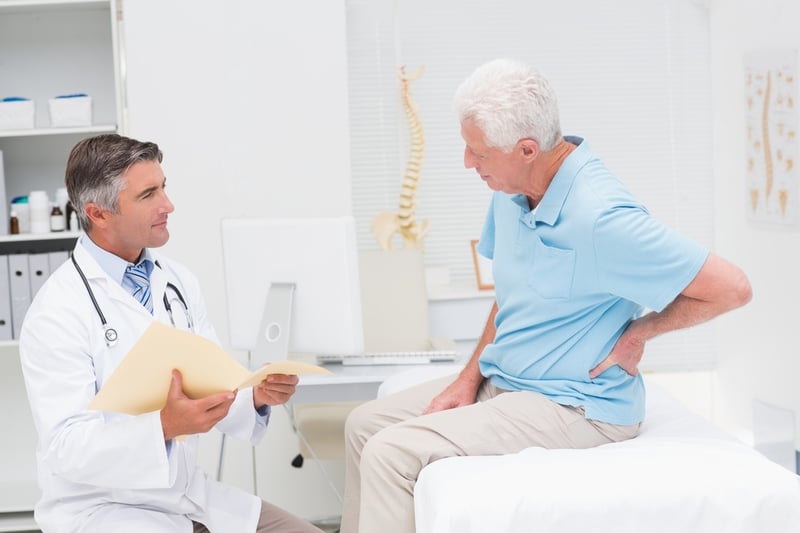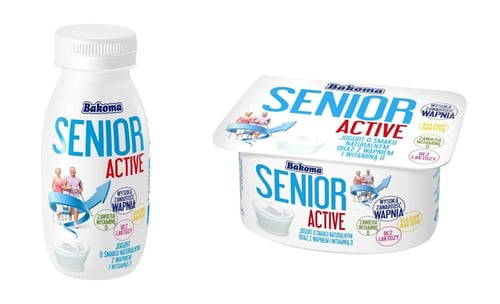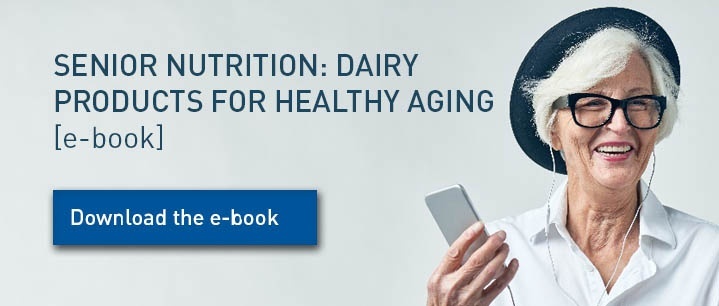Osteoporosis is steadily increasing due to the ageing population. Worldwide, osteoporosis is responsible for over 8.9 million bone fractures each year, i.e. one osteoporosis-related fracture every 3 seconds. What solutions are available today for slowing down the progression of this condition among the elderly? What if agri-food manufacturers could also play their part in preventing osteoporosis?
DEFINITION AND CAUSES OF OSTEOPOROSIS
“Osteoporosis is a generalised disease of the skeleton, characterised by low bone density and changes in bone microarchitecture, resulting in high bone fragility and therefore high risk of fracture” (WHO definition).
Some notes on bone physiology : Bone remodelling

Bone is a hard, highly-mineralised material but is also a living tissue. Like all parts of our bodies, it undergoes a continuous process of renewal and repair, called bone remodelling.
This process, essential for keeping bones strong, is carried out by specific cells called osteoblasts. These cells play a major part in bone synthesis. First they produce protein fibres and then they bind strengthening minerals to them. The main minerals concerned are phosphorus and calcium which form a compound, to which magnesium and silica are then added. Remember, calcium is the most abundant mineral in the human body. It accounts for around 1 to 1.2 kg of body weight in adults and is involved primarily in bone formation and maintenance.
Changes in bone density
Bone remodelling tends to become less efficient with age leading to the progressive loss of bone density. The skeleton mass of an individual develops in three stages.
- The rapid growth stage, from birth to adulthood (0-20 years old), when bone mass is at its maximum. It is during this crucial period that bone stock is built.
- The plateau stage (20-40 years old): the skeleton is continuously renewed by the bone remodelling process.
- The physiological bone loss stage also known as osteopenia (from 45 years old onwards): this natural and progressive phenomenon leads to bone weakening.
Want to learn more? Have a look at our advice for adjusting your manufacturing formulations to meet the needs of the elderly →
From osteopenia to osteoporosis
Known as osteopenia, bone loss after the age of 45 is normal and manifests itself differently in men and women.
- In men it is slow, regular and linear, from 0.5 to 1% per year.
- In women, it speeds up during menopause, 3 to 5% per year for 1 to 3 years, and then 1 to 2% per year for 5 to 10 years following menopause. We are referring to rapid post-menopausal bone loss, linked to oestrogen deficit. This means that menopausal women no longer benefit from this hormone that protects their bones.
When bone loss exceeds these values it becomes pathological, and at this point we refer to osteoporosis. It is important to realise that insufficient bone density and changes in the bone microarchitecture cause bone fragility and therefore a high risk of fracture.

A GROWING PUBLIC HEALTH ISSUE
200 million women are affected by osteoporosis
Primary osteoporosis is the most frequently occurring form, and is often age-related. Between 30 and 80 years old, women lose 45% of their initial bone stock, whereas men only lose 15-20%. Age-related osteoporosis occurs 3 times more frequently among women than among men. Over 200 million women in the world suffer from this condition, and 40% of them are post-menopausal.But men are not immune, a quarter of the fractures they suffer are due to a loss of bone density.
Secondary forms of osteoporosis can be caused by illnesses or treatments. Amongst the diseases that can lead to osteoporosis, recent studies have revealed a strong link between diabetes and bone remodelling markers. There are calls for osteopenia to be monitored in type 2 diabetes patients.
A real impact on daily life
A silent disease until the fracture happens, osteoporosis has no external symptoms and causes no particular pain. The consequences of a fracture for osteoporosis sufferers can be dramatic, particularly for elderly patients. For example, hip fractures can lead to a loss of independence and have a serious impact on quality of life, causing feelings of isolation for those affected.
HOW CAN OSTEOPOROSIS BE PREVENTED?
Good nutritional habits from day one

Genetics dictate the size and strength of the skeleton, but several external factors also play a part in improving bone strength and preventing osteoporosis, such as eating foods rich in calcium and proteins as well as exercising regularly.
We often hear about osteoporosis in relation to the elderly, but prevention should start in childhood and adolescence with a healthy and active lifestyle. Scientific studies have shown that when milk intake is low during childhood, these children will go on to suffer twice as many osteoporotic fractures in adulthood. (Kalkwarf HJ, et al. American Journal of Clinical Nutrition 2003)
Before starting any specific treatment to combat osteoporosis in elderly people, the French Health Authority recommends that first, any possible vitamin D and calcium deficiencies are corrected, particularly by means of dietary adjustment.
By way of reminder, foods which provide the highest dietary intake in calcium and proteins are milk and dairy products. Respectively, they provide around 50% of the calcium consumed by adults and children. A diet which contains no dairy products provides less than 500 mg of calcium per day. Nutritional guidelines for the population regarding calcium intake are 950 mg/day for people over 25 years old. And for the elderly population, the recommended daily intake of calcium increases to 1200 mg/day.
Further reading: milk proteins to combat sarcopenia.
AGRI-FOOD MANUFACTURERS, STAKEHOLDERS IN NUTRITION AND HEALTH
Agri-food manufacturers can play a part in preventing osteoporosis by developing foods rich in calcium and milk proteins tailored to the needs of all consumers, from infants to senior citizens, with a view to consolidating optimum bone stock.
Here are a few areas for manufacturers to think about when developing nutritional products targeting the elderly population:
- Developing products with a high calcium content for elderly consumers.
In fact, calcium is an ingredient that helps the prevention of osteoporosis. For this reason, manufacturers can prioritise product formulations which include calcium. Formulation tailoring can be highlighted on packaging and in consumer communication using wording such as “calcium-rich product” or “source of calcium”. The use of these nutritional claims is regulated by Regulation (EC) no. 1924/2006.
- Pay attention to the organoleptic quality and the textures in products given that as people get older, their sensory capacities diminish and chewing and swallowing worsen.
- Think about the formats best suited to this target audience and to the times of day when they eat or drink, for example liquid foods, savoury flans or calcium and protein-enriched desserts, nutritional supplement powders for diluting or mixing into preparations and more.

Examples of milk products for senior citizens (Source: Innova Market 2017)
- Going beyond the product... We must not forget that physical exercise is an integral part of treatment for people with osteoporosis or at risk of developing it. Manufacturers can also contribute to consumer education in this respect by using wording such as “the right food plus exercise equals good health” published as part of the National Nutrition and Health Programme, and by posting healthy recipes and exercise tips for all ages on their blogs and social networks. (Source: Actualités Pharmaceutiques, Volume 56, Issue 571, December 2017)
THERE ARE NATURAL NUTRITIONAL SOLUTIONS FOR OSTEOPOROSIS
At Armor Proteines, our aim is to use ingredients obtained from milk fractionation in order to offer innovative solutions to the nutrition and health market. Our range of milk-based products contains naturally-occurring proteins, calcium and phosphorus, the building blocks of the bone matrix. Learn about all the ingredients used by Armor Proteines which help build strong bones during childhood and maintain bone stock during old age.
Explore the ingredients for promoting bone health by Armor Proteines.
Sources :
- Kalkwarf HJ, Khoury JC, Lanphear BP. Milk intake during childhood and adolescence, adult bone density, and osteoporotic fractures in US women. Am J Clin Nutr 2003;77:257–65.
- https://www.economie.gouv.fr/dgccrf/Consommation/Etiquetage-des-produits/Allegations-nutrionnelles-et-de-sante
- https://sciencedirect.com/science/article/pii/S0515370017304147
- https://www.inserm.fr/information-en-sante/dossiers-information/osteoporose
- https://www.has-sante.fr/portail/jcms/c_1194578/fr/prise-en-charge-de-l-osteoporose-et-indications-de-l-osteodensitometrie
- https://www.revmed.ch/RMS/2016/RMS-N-536/Osteoporose-chez-les-femmes-menopausees-entre-40-et-65-ans-algorithme-pour-le-gynecologue
- http://www.grio.org/documents/page240/osteoporose-avec-ou-sans-lait.pdf
- https://www.nof.org/
- http://www.educasante.org/img/Osteoporose%20et%20chutes%20des%20personnes%20agees.pdf
- http://www.fondation-louisbonduelle.org/nutriment/calcium/
- https://www.has-sante.fr/portail/jcms/c_1751307/fr/les-medicaments-de-l-osteoporose
- http://www.who.int/dietphysicalactivity/publications/trs916/summary/fr/
- https://www.anses.fr/fr/content/le-calcium
 Emilie SCOTTI
Emilie SCOTTI





